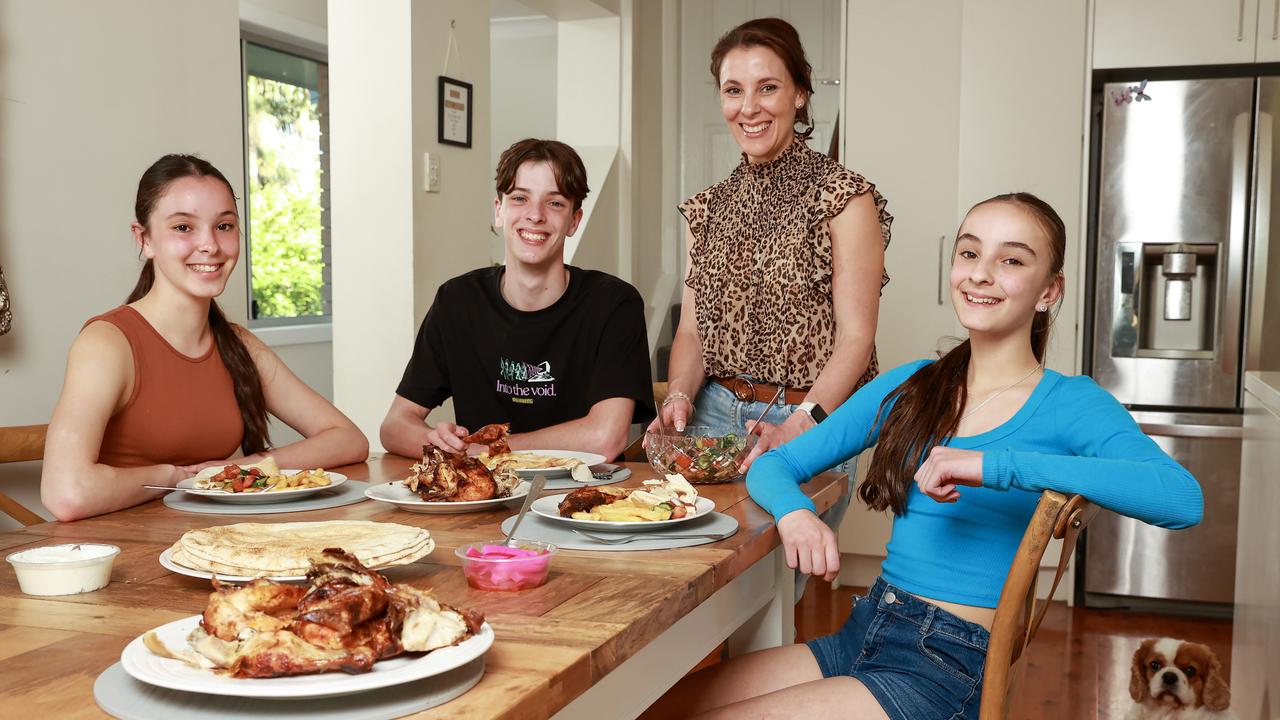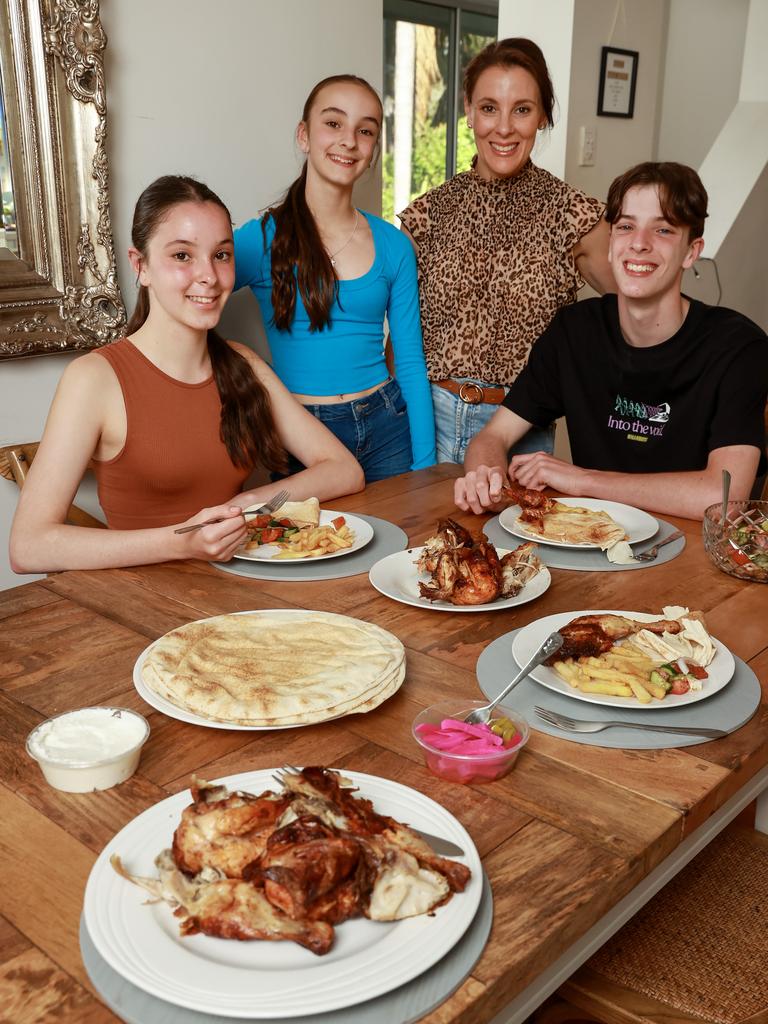Regular family meals around table key to kids’ life skills and values
Australian families have returned to worse than pre-pandemic realities of being ‘stressed, rushed and pressed for time’, with togetherness around the dinner table one casualty worth saving

READING LEVEL: GREEN
A growing number of households are ditching the dining table over rising living pressures and busy lifestyles.
Social researcher Mark McCrindle said families had returned to worse than pre-pandemic realities of being “stressed, rushed and pressed for time” which was “not a sustainable* approach to life.”

He said sharing family meals regularly was key to kids developing life skills and values, and failure to do so could have “detrimental*” impacts.
“It is one of the last remaining times in our calendar where families get together,” he said.
“It would be detrimental to lose more of that from our family routine.”
New research revealed families were losing valuable time with one another, with less than half of Australian households eating evening meals together regularly.

The survey found just 45 per cent of Australians ate with others despite almost 90 per cent of people wanting to do so more often.
It found families shared a meal about four times a week or less as a direct result of busy lifestyles, rising inflation* and cost-of-living pressures, which are forecast* to get worse.
Many people were forced to eat on the go or while in the car, while others reported eating meals on the couch or on the sidelines during weekend sport.
Many studies show the benefits of shared family meals, including healthier eating habits, stronger family bonds and improved confidence and vocabulary in children.

The Procter family, from the Sydney suburb of Castle Hill, makes an effort to eat dinner together every night, even if it means eating late.
“I grew up having dinner with my family every night, so for me it’s quite important,” mum Natalie said.
“That said, it can be challenging with co-curricular* activities. It’s actually a miracle that we manage to have family time together (but) I’d rather wait, debrief* the day and hang out together and then end up going to bed later.
“The kids are at an age when you really get along (and) it’s actually a really nice social time.”
GLOSSARY
- sustainable: able to continue over a long period of time
- detrimental: harmful, damaging, something causing negative outcomes
- inflation: increase in the prices of goods and services bought by households
- forecast: predicted, expected, calculated
- co-curricular: activities and experiences that complement what students are learning
- debrief: question someone in detail to get useful information about something
EXTRA READING
Australians tuck into the takeaway
Chores could boost kids’ brains
Aussie parents’ screen time tussle
QUICK QUIZ
- What percentage of Australian eat with other people?
- What percentage wanted to share mealtimes more often?
- How many times do families share a meal, according to the survey?
- This reduced family time was found to be a direct result of what factors?
- What are four well-established benefits of shared family meals?
LISTEN TO THIS STORY
CLASSROOM ACTIVITIES
1. Family meal roster
There are so many advantages to families eating dinner together, some are listed in the Kids News article. Can you think of three more?
–
–
–
Think of your own family routines and commitments and create a family dinner roster. It might mean that dinner is eaten at a different time each night to accommodate commitments for each family member. Write down each family member’s name, sport/work commitments for each night of the week and slot a half-hour dinner time in each night.
You can make your roster more appealing by copying it onto coloured paper or creating it using a computer program.
Time: allow 45 minutes to complete this activity
Curriculum Links: English; Personal and Social; Critical and Creative Thinking
2. Extension
Think of five to 10 good family dinner conversation starters and write them each on a piece of paper to create a deck of cards. Use these cards with your family each night you’re having dinner together. Take it in turns of turning over one or two each night to have a family discussion. Make sure everyone gets a turn to answer the question. An example could be, tell us something you laughed at today.
Time: allow 20 minutes to complete this activity
Curriculum Links: English; Personal and Social; Critical and Creative Thinking
VCOP ACTIVITY
Read this!
A headline on an article – or a title on your text – should capture the attention of the audience, telling them to read this now. So choosing the perfect words for a headline or title is very important.
Create three new headlines for the events that took place in this article. Remember, what you write and how you write it will set the pace for the whole text, so make sure it matches.
Read out your headlines to a partner and discuss what the article will be about based on the headline you created. Discuss the tone and mood you set in just your few, short words. Does it do the article justice? Will it capture the audience’s attention the way you hoped? Would you want to read more?
Consider how a headline or title is similar to using short, sharp sentences throughout your text. They can be just as important as complex ones. Go through the last text you wrote and highlight any short, sharp sentences that capture the audience.


